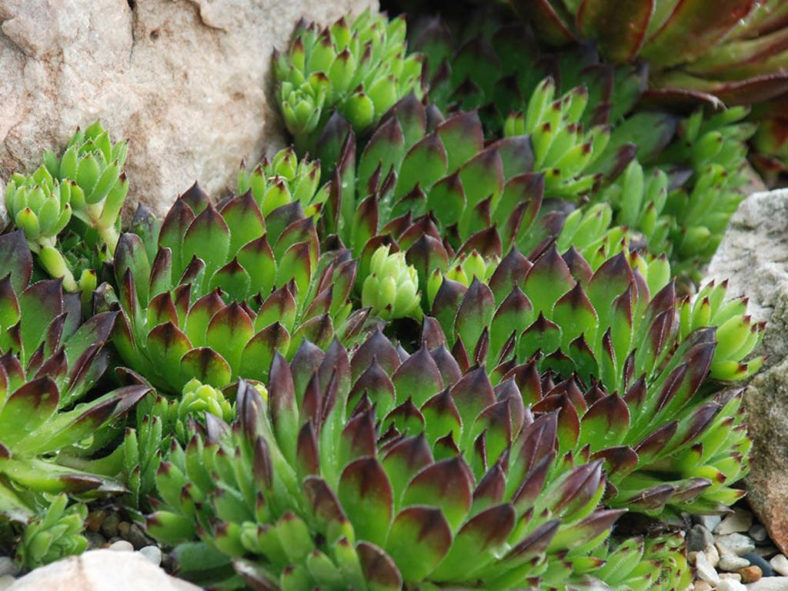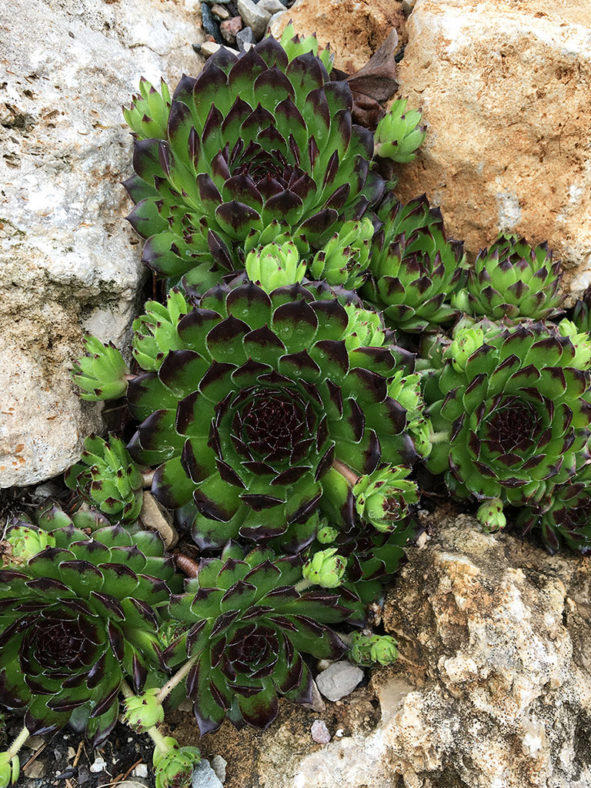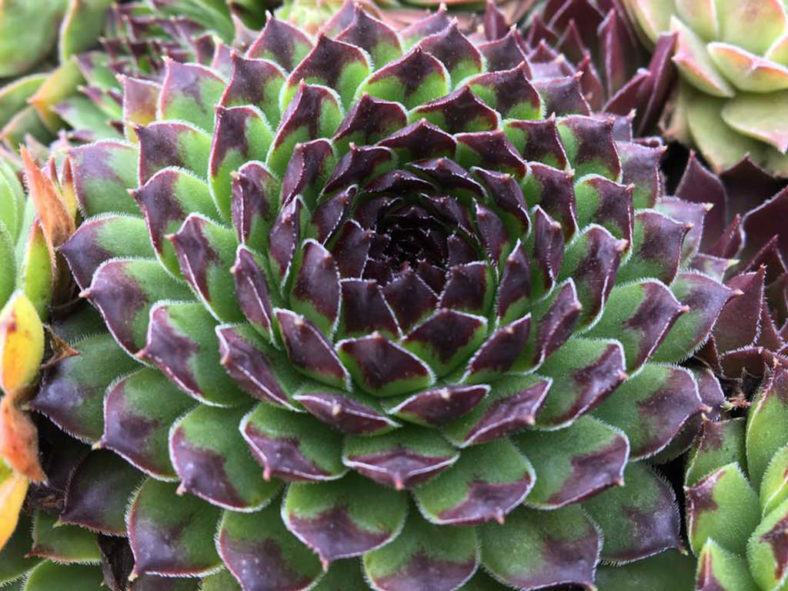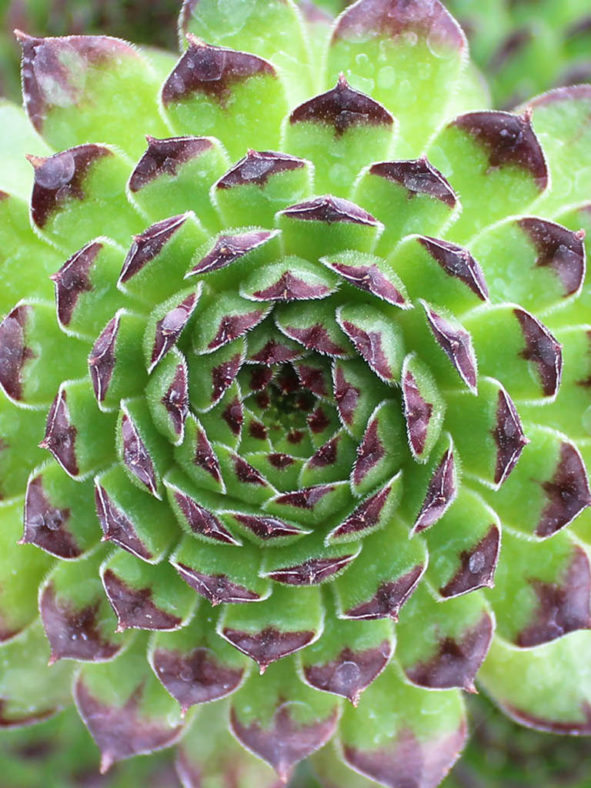Scientific Name
Sempervivum 'Appletini'
Synonym(s)
Sempervivum 'Appletini' Chick Charms®, Sempervivum 'Reinhardt'
Scientific Classification
Family: Crassulaceae
Subfamily: Sedoideae
Tribe: Sedeae
Subtribe: Sedinae
Genus: Sempervivum
Origin
Sempervivum 'Appletini' is a hybrid created and introduced by Martin Harberer in 1979 as Sempervivum 'Reinhardt'. It was rebranded by Chris Hansen in 2014 and sold as a part of his Chick Charms® series under the trademark name Sempervivum 'Appletini'.
Description
Sempervivum 'Appletini', also known as Sempervivum 'Reinhardt', is a small succulent that forms rosettes of apple green leaves with dark burgundy to near black tips. The rosettes can grow up to 3 inches (7.5 cm) in diameter and produce offsets on stolons, forming a large clump or mat over time. The leaves are fleshy, narrow, and pointing upright.
The pink flowers appear in clusters on a leafy stalk that can grow up to 8 inches (20 cm) tall in summer. The rosettes die after flowering but produce many offsets that continue to grow.

How to Grow and Care for Sempervivum 'Appletini'
Light: This succulent prefers a spot in full sun but will appreciate some afternoon shade if planted in hot climates. It is unsuitable for indoor growing because it usually does not get as much sunlight as it likes.
Soil: To ensure S. 'Appletini' thrives, it needs a well-draining soil mix with 25 to 50 % sand, gravel, and perlite or pumice. If planted in a pot, a commercial soil mix for succulents should be sufficient to keep the roots dry and happy.
Temperature: S. 'Appletini' is perfect for cold climates, as it can handle temperatures down to -30 °F (-34.4 °C). It is also heat-tolerant but prefers average summer temperatures between 65 and 75 °F (18 and 24 °C). USDA Plant Hardiness Zones 4a to 9b, -30 to 30 °F (-34.4 to -1.1 °C).
Watering: Water thoroughly during the spring and summer and allow the soil to dry out between watering. Reduce watering in the fall when S. 'Appletini' enters dormancy. Mature rosettes planted in the ground can overwinter without receiving extra water from you. Plants in containers may need a little water to make it through winter. Never let water sit in the rosette or underneath the pot.
Fertilizing: This succulent grows well without feeding but benefits from a controlled-release fertilizer at the beginning of the growing season. It can also be fertilized once a week with a diluted liquid solution.
Repotting: Plants in containers will benefit from being repotted. Repot as needed, preferably during the spring.
Propagation: S. 'Appletini' can be grown by dividing the offsets produced each season. The best time to divide the offsets is spring or summer, once they are at least a quarter of the mother rosette's size.
Learn more at How to Grow and Care for Sempervivum.
Toxicity of Sempervivum 'Appletini'
Sempervivums are not known to contain any toxic compounds. Therefore, S. 'Appletini' is considered a safe plant to grow around pets and children.
Links
- Back to genus Sempervivum
- Succupedia: Browse succulents by Scientific Name, Common Name, Genus, Family, USDA Hardiness Zone, Origin, or cacti by Genus
Photo Gallery
Click on a photo to see a larger version.


